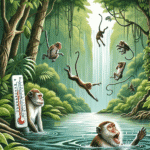Unveiling the Secrets of Flower Anatomy: What Pollinators Discover in Male Parts
Flowers are not just visually captivating; they serve a crucial role in the reproductive cycle of plants. At the heart of this process lies flower anatomy, particularly its male parts—an area rich with secrets that pollinators eagerly explore. Understanding these components can shed light on how plants attract their pollinator partners and ensure successful reproduction.
The Basics of Flower Anatomy
To appreciate the intricacies involved, it’s essential to understand the fundamental structure of flowers. A typical flower consists of several key parts: petals, sepals, stamens (the male reproductive organs), and carpels (the female reproductive organs). The stamens are composed primarily of two elements: anthers and filaments.
The filament acts as a supportive stalk that holds up the anther, where pollen is produced. Pollen grains contain male gametes necessary for fertilization. When we delve into the world of pollination, it becomes clear that these male parts play a pivotal role in attracting various agents—from bees to birds—that facilitate plant reproduction.
The Role of Anthers in Attraction
Anthers are often brightly colored or exhibit unique shapes to catch the eye—or antennae—of potential pollinators. This visual allure is complemented by olfactory signals; many flowers emit fragrances designed to lure specific species. For instance, certain orchids mimic pheromones released by female insects to attract males looking for mates.
When a pollinator visits a flower seeking nectar or pollen for food, they inadvertently collect pollen from the anther’s surface due to its sticky or spiky texture. As they move from one blossom to another, they transfer this pollen onto stigmas—the receptive surfaces found at the tips of carpels—facilitating cross-pollination and genetic diversity among plants.
Pollen as Nutrition
Beyond its role in fertilization, pollen serves as an important nutritional resource for many animals. Bees especially rely on pollen not only as food but also as protein-rich sustenance for their developing larvae. Consequently, flowers have evolved strategies ensuring that their pollen remains accessible yet secure until needed.
Some species produce large quantities of fine-grained powdery pollen easily collected by visiting insects while others might create larger granules requiring more effort from pollinators who must work harder for rewards like nectar. This dynamic relationship between flowering plants and their visitors underscores nature’s balance through mutualistic interactions beneficial for both parties involved.
Adaptations That Enhance Pollination Efficiency
Plants have developed numerous adaptations over time aimed at enhancing efficient pollination processes involving their male parts:
1) **Timing**: Many flowering plants synchronize blooming periods with peak activity times for specific pollinators.
2) **Morphology**: Some flowers possess specialized structures guiding insect movements toward anthers when searching for nectar.
3) **Rewards**: Nectar guides—patterns visible under UV light which humans cannot see—help direct insect attention precisely towards those areas containing high concentrations of rewarding resources such as sugars or proteins present within floral nectaries located near stamen regions.
These adaptations demonstrate how closely intertwined plant life is with its ecosystem—a testament not only to evolution but also collaboration across species lines resulting ultimately in flourishing biodiversity!
Conclusion
Flower anatomy reveals fascinating insights into nature’s intricate web connecting flora with fauna through mutual dependence centered around male reproductive structures—the very essence fueling ecosystems worldwide! By unveiling these secrets hidden within blossoms’ stamen chambers filled with precious nutrients awaiting discovery by eager visitors like bees or butterflies—we gain appreciation not just regarding beauty but also survival mechanisms governing our planet’s diverse habitats today! Understanding these relationships offers profound implications about conservation efforts essential if we hope preserve them against threats posed climate change & habitat loss affecting populations reliant upon healthy environments thriving alongside flourishing blooms alike!



